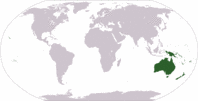Cyrtostachys bakeri
| Cyrtostachys (sihr-toh-STAHK-iss) bakeri (baker'-ee) | |||||||
|---|---|---|---|---|---|---|---|
 The massive inflorescence of Cyrtostachys bakeri (Image: William Baker, RBG Kew). | |||||||
| Scientific Classification | |||||||
| |||||||
| Synonyms | |||||||
|
| |||||||
| Native Continent | |||||||
|
| |||||||
| Morphology | |||||||
| |||||||
| Culture | |||||||
|
| |||||||
| Survivability index | |||||||
|
| |||||||
| Common names | |||||||
|
| |||||||
Contents
Habitat and Distribution
Cyrtostachys bakeri is endemic to remote Western Province of Papua New Guinea. Forest in river valleys, at about 750 m. above sea level. This species occurs only in Papua New Guinea, and is known only from the Tabubil area, in North Fly District, Western Province.
Description
Cyrtostachys bakeri is a robust, canopy palm, with stems reaching to 25 m. in height, and 25 cm. in diameter. It is also clustering, so that each plant may consist of several towering trunks. Each stem can carry around eight leaves, which are held like a shuttlecock. The leaves are almost 5 m. long with 160 to 180 pendulous pinnae. Huge inflorescences develop below the leaves, each up to 1.2 m. in length. These bear tiny flowers in pits on the surface of the branches. The fruits are black and bullet-shaped, and reach 2.5 cm. (1 inch) in length. The fruits are black and bullet-shaped, and reach 2.5 cm. (1 inch) in length. Editing by edric.
Culture
Cold Hardiness Zone: 10b
Comments and Curiosities
Cyrtostachys bakeri, is a spectacular canopy palm, that was discovered in Papua New Guinea, by Kew’s Head of Palm Research Bill Baker, and his local collaborator Roy Banka in 2000. This species produces clumps of towering trunks, that can reach 25 m. in height. Its flowers are produced on colossal spreading inflorescences, though the flowers themselves are minute. The new species was officially described in 2009 by Charlie Heatubun, an Indonesian palm expert and long-time collaborator of Kew’s palm team. This palm is one of many new discoveries, being made by Kew botanists and their collaborators, as part of the ongoing Palms of New Guinea project. Dozens of new species of palm are being discovered, in this, the largest tropical island in the world.
The conservation status of this palm is not sufficiently known. In the site of discovery, very few individuals were observed, with some other individuals remaining in grasslands from which forest had previously been cleared. More population and distribution data are required, but the primary threat is habitat degradation due to deforestation and mining activities in the area.
- IMAGE GALLERY
External Links
- Glossary of Palm Terms
- MODERN BOTANICAL LATIN
- "Just To Be Clear"
- http://www.kew.org/plants-fungi/species-browser/Cyrtostachys-bakeri.htm
References
Phonetic spelling of Latin names by edric.
Special thanks to Geoff Stein, (Palmbob) for his hundreds of photos.
Special thanks to Palmweb.org, Dr. John Dransfield, Dr. Bill Baker & team, for their volumes of information and photos.
Glossary of Palm Terms; Based on the glossary in Dransfield, J., N.W. Uhl, C.B. Asmussen-Lange, W.J. Baker, M.M. Harley & C.E. Lewis. 2008. Genera Palmarum - Evolution and Classification of the Palms. Royal Botanic Gardens, Kew. All images copyright of the artists and photographers (see images for credits).
Many Special Thanks to Ed Vaile for his long hours of tireless editing and numerous contributions.


